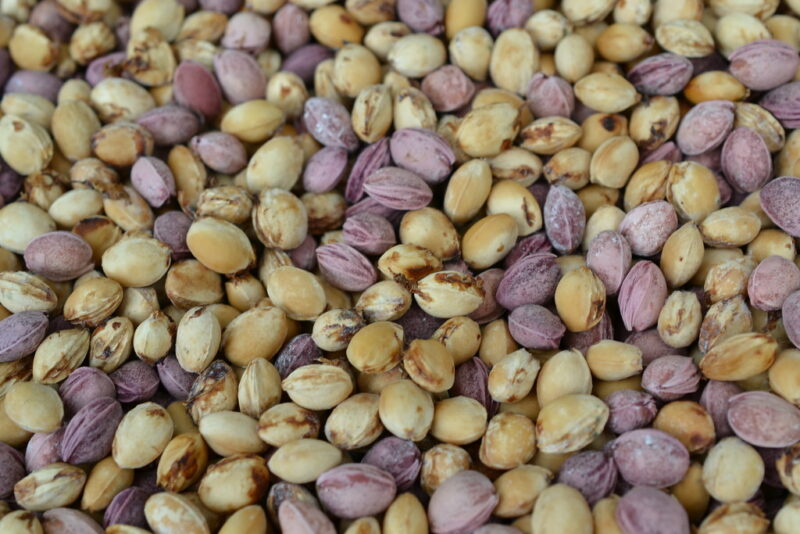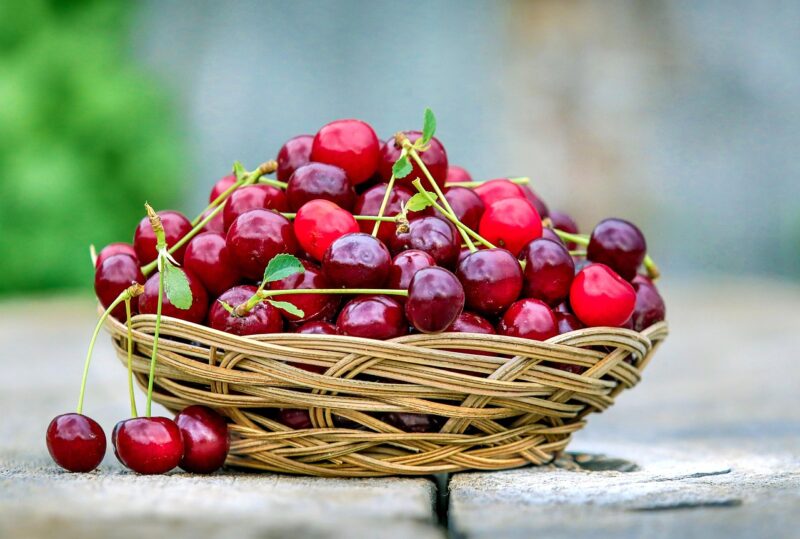If you’ve ever savored a sweet, ripe cherry and pondered whether you could grow your own cherry tree from the pit that remains, you’re in for a delightful exploration! This guide explores planting cherry pits, shedding light on the practicality of this endeavor, how to properly germinate cherry seeds, and all the essential steps to cultivate your very own cherry tree.
Understanding Cherry Varieties and their Seeds
To fully grasp the journey of planting cherry pits, it’s crucial to first understand the difference between cherry varieties. The two primary categories of cherries are sweet cherries (Prunus avium) and sour cherries (Prunus cerasus). Sweet cherries, often enjoyed fresh, are typically larger and sweeter, while sour cherries are commonly used for cooking and baking due to their tart flavor.
Both types of cherries comprise a variety of cultivars, each with unique traits that can affect your numerous gardening choices, including taste, color, and growth patterns. In the context of planting pits, it’s essential to know that many of the commercial varieties of sweet and sour cherries are hybrids or grafted plants. This means that the seeds from these cherries may not produce trees that are true to their parentage, resulting in a fruit that could differ significantly in taste and quality.
So, can you plant cherry pits? Yes, you can, but understanding the likely outcomes is a critical part of this journey.
The Germination Process of Cherry Pits
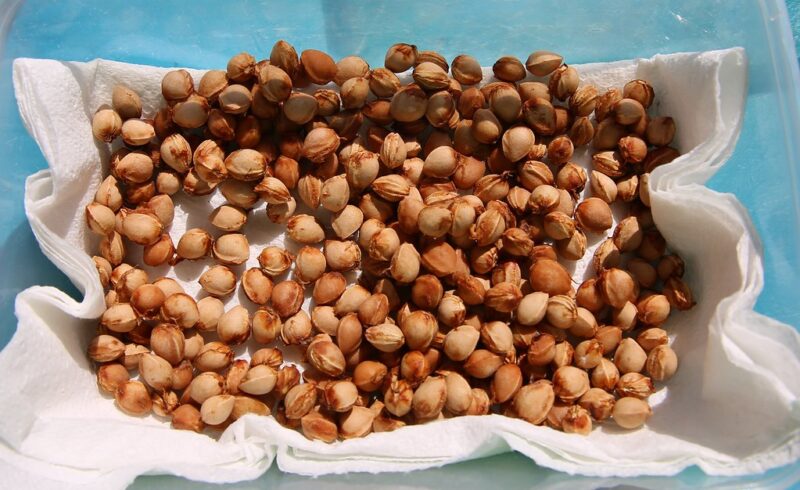
If you’re keen on attempting to grow cherry trees from seed, understanding the germination process is your first step. Cherry seeds require a specific set of conditions to break dormancy, a phenomenon known as stratification. This process mimics the natural winter conditions that seeds experience in the wild, allowing them to germinate effectively.
1. Harvesting Cherry Pits
After enjoying a delightful cherry feast, the first step to planting cherry pits is harvesting them correctly. Choose fresh, ripe cherries devoid of blemishes. After consuming the flesh, clean the pits thoroughly under running water to remove any residue. This helps prevent mold during the drying phase.
2. Drying the Pits
Once cleaned, let the cherry pits dry for about a week in a cool, dark place. This drying period ensures any remaining moisture evaporates, making it less likely for the pits to rot during stratification.
3. Cold Stratification
For proper germination, cherry seeds require a cold stratification period to simulate winter. This typically ranges from 10 to 12 weeks. You can easily achieve this at home:
Method 1: Refrigerator Stratification
Combine your dried cherry pits with a moist medium, such as sand or peat moss, in a sealable plastic bag. Place this bag in your refrigerator, checking periodically to ensure it remains moist but not soggy.Method 2: Outdoor Stratification
If you live in a region with cold winters, you can simply plant the seeds outdoors in the fall. Nature will take care of the stratification process when the temperatures drop.
4. Sowing the Seeds
After the stratification period, it’s time to sow the seeds. Choose a suitable planting medium, such as potting soil enriched with organic matter. Plant each pit about 1 to 2 inches deep in individual pots or a seed tray, ensuring they are spaced adequately to allow for growth. Water the soil gently, keeping it moist but not oversaturated.
Caring for Germinating Cherry Trees
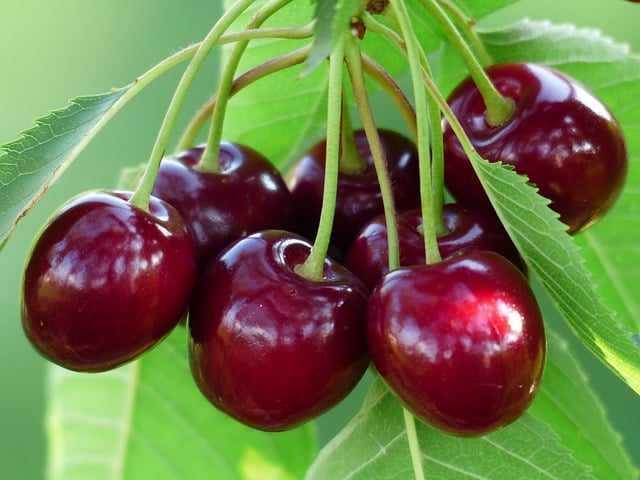
With the seeds in the soil, the next challenge is nurturing them through germination. Patience is key here, as cherry seeds can take anywhere from a few weeks to several months to sprout, depending on the variety and the conditions provided.
1. Light and Temperature Requirements
Cherry seeds prefer a warm environment to germinate, ideally around 70°F (21°C). Place your pots in a spot that receives indirect sunlight, as direct sunlight can raise soil temperatures too high and harm emerging seedlings.
2. Watering Appropriately
Water is critical during this stage. The top inch of soil should be kept consistently moist. Avoid allowing the soil to dry out completely, as this can hinder germination and damage the delicate seeds. Conversely, overwatering can lead to rot, so maintain a balanced moisture level.
3. Fertilization and Growth
Once the seedlings emerge and develop a few sets of leaves, it’s time to start thinking about fertilization. A diluted, balanced fertilizer can be applied every couple of weeks to support healthy growth.
Transplanting Your Cherry Seedlings

Once your cherry seedlings grow to about 6 inches tall and have established a robust root system, it’s time to transplant them into larger pots or directly into your garden.
1. Choosing the Right Spot
Cherry trees require full sun, so pick a site in your garden that receives at least 6 to 8 hours of sunlight daily. Additionally, these trees prefer well-draining soil with good air circulation. Avoid low spots that may collect water and lead to root rot.
2. Preparing the Site
If planting in the ground, ensure you amend the soil with compost or well-rotted manure to provide essential nutrients. Space each tree adequately to allow their full mature size; sweet cherries can grow to be quite large, while sour cherries stay smaller.
3. Transplanting Technique
Gently remove the seedling from its pot, taking care not to disturb its roots too much. Dig a hole slightly larger than the root ball, place the seedling into the hole, and backfill with soil. Water thoroughly to eliminate any air pockets and ensure the roots make contact with the soil.
Challenges and Considerations When Planting Cherry Pits
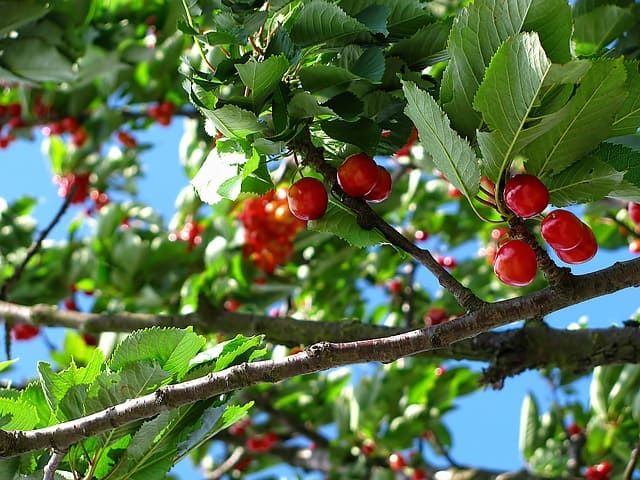
While the thought of growing your own cherries is tantalizing, it is important to consider some potential challenges along this gardening journey.
1. Time Until Fruiting
Be prepared for a waiting game. Cherry trees grown from seed can take several years to bear fruit—often between 4 to 7 years. If your cherry is a hybrid or grafted variety, it may not produce fruit that resembles the original cherry, or it may even take longer.
2. Pest and Disease Management
Like any fruit tree, cherry trees are susceptible to various pests and diseases. Common threats include aphids, cherry fruit flies, and fungal infections. Regular monitoring, timely pruning, and organic pest control methods can help manage these challenges effectively.
3. Pollination Requirements
Some cherry trees are self-pollinating, while others require cross-pollination to set fruit. Sweet cherries often need a compatible partner nearby for effective pollination, so if you’re aiming for abundant harvests, planting multiple trees can be beneficial.
4. Climate Considerations
Cherry trees thrive in temperate climates. If you live in a region with brutal summers or intense winters, choose appropriate varieties that can withstand such conditions.
The Joy of Harvesting Your Cherries
After the long wait, once your cherry tree finally bears fruit, the joy of harvesting is an experience unlike any other. The first bite into a homegrown cherry is sweet and flavorful, unlike any you could find in the store, filled with the satisfaction of your hard work.
1. Proper Harvesting Techniques
Harvest cherries when they are fully ripe; this is when they exhibit the deepest color and softness. Gently twist the stem rather than pulling, to avoid damaging the fruit or the tree.
2. Celebrating Your Bounty
With your fresh cherries, the possibilities are endless! From pies and jams to simply snacking, the fruit you have grown will offer a sense of pride and enjoyment that store-bought cherries cannot match.
Conclusion: The Journey of Growing Cherry Trees
So, can you plant cherry pits? Absolutely! While the journey to growing your own cherry tree requires careful attention, patience, and a bit of fortitude, the rewards are plentiful. From the germination process to nurturing the seedlings through growth, and finally to harvesting your cherished fruit, you engage in a gratifying back-to-nature experience.



